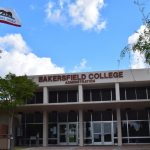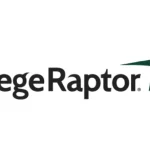Summer is here, school is out, and soon-to-be college students are enjoying a few months of freedom before heading to their chosen school in the fall.
Well, not all of them.
The summer months are a time of immense uncertainty for many students preparing to go to college. While they might be on the cusp of a major life event — they’re also in limbo. They’ve left high school, so they no longer have the help of teachers and counselors there. But they’re not yet enrolled in college, so they don’t have access to professional support or guidance.
Faced with many decisions — from applying for financial aid to buying textbooks and completing housing forms — some students don’t know what to do or who to turn to for help. This is when summer melt happens, and pre-enrolled students simply slip off the radar.
The National College Attainment Network (NCAN) defines summer melt as “the phenomenon of college-intending students who have applied to, been accepted by, and made a deposit to a college or university, but fail to matriculate to that college (or any other) in the fall following their high school graduation.”
And unfortunately, it’s a problem every admissions team knows all too well.
Research suggests that summer melt at colleges impacts between 10 and 40% of students, with first-generation college students and those from low-income families at particular risk. But there are plenty of ways that higher education institutions can freeze summer melt in its tracks.
In this blog post, we’ll explore why summer melt happens and how you can empower incoming students with the resources they need to follow through on their enrollment plans.
What Causes Summer Melt?
Getting accepted into college is exciting, but many admitted students soon start worrying about whether they can afford to attend their chosen school. Filling in financial aid forms can be one of the biggest hurdles, and NCAN research identified the completion of the FAFSA as a key predictor of summer melt.
One survey found that over 30% of first-generation and low-income students struggle to complete their FAFSA filing. Often, these students are filling out the form without any parental guidance. Other challenges that students face include needing to track down tax and citizenship documents, navigating changes in income, and finding the questions confusing.
And if students do manage to complete the FAFSA, their application may be one of the 4.1 million selected for income verification. The additional burden of needing to provide more documentation may mean they don’t complete their application. The Office of Federal Student Aid (FSA) estimates that 7.2% of students selected for income verification ultimately miss out on aid due to what they term “verification melt.”
These financial hurdles create barriers for students, who may decide they can no longer afford to attend college. By supporting incoming students through this process, higher education institutions can encourage them to complete this paperwork. The key is communicating with students — in a way designed to catch their attention.
Preventing Summer Melt With Better Communication
One of the most effective strategies to engage and empower students over the summer is simply communicating with them using a format they’re comfortable with.
There are huge differences in the ways different generations prefer to communicate. As digital natives, high-school graduates rarely use email as their first line of communication. Instead, they prefer texts and messaging apps.
Open rates for emails are only around 20%, which means a massive number of students may not even be reading your reminders. But for text messages? The open rate is a staggering 98%. What’s more, most texts are read within three minutes of being received.
If you’re looking for a way to communicate with prospective students — and engage with them in a way that prompts action — texting is the most impactful method to help guide them through enrollment.
By texting your students, you can provide them with the answers they’re looking for. If a first-generation college student doesn’t know how to complete their application form for financial aid? With a quick text exchange, you can simplify the process for them and ensure they meet critical deadlines.
Empower Future Students To Enroll With Confidence
Your staff likely knows all the important deadlines without even having to look them up — after all, these dates dictate their work life. But your future students don’t.
While financial aid documents and deadlines should be a priority, prospective students also need (and want!) information about orientation deadlines, housing questionnaires, tuition due dates, and more. All of this can lead to information overload. To avoid this, it’s essential to consider whether your student outreach is helping create belonging and engagement — or negatively impacting enrollment.
Friction in these early days of a student’s experience means some may switch off and decide it’s easier not to attend college. Empowering students by making it easier for them to access the information they need can be the key to changing their minds. Using an AI-backed, two-way texting solution like Ocelot can help nudge students in the right direction with personalized 24/7 support.
Opening up new lines of communication — in a way that most students feel comfortable with — removes barriers to attendance. Texting with a tool like Ocelot allows you to:
- Notify students about upcoming deadlines
- Ask if students need help with any paperwork
- Quickly provide accurate responses to student questions
- Free up staff to spend more time counseling
- Engage in personalized conversations at scale
- Target at-risk students (e.g., those who haven’t completed the FAFSA) with reminders
College students are already extremely comfortable using AI chatbots, and using this technology is a great way to quickly answer students’ common questions — especially considering 40% of inquiries happen after office hours.
Putting Summer Melt on Ice
There’s no denying that preparing for college is hard. Navigating the countless deadlines, forms, and due dates is one thing, but students are also feeling the impending pressure of leaping into the next stage of their lives. These stresses can add up, leaving students feeling overwhelmed, isolated, and wanting to give up.
By breaking down the barriers to attendance, higher education institutions can make the enrollment process much smoother, which means students are more likely to actually attend. And the easiest way to achieve this is by sending messages on the device that students already can’t live without: their phones.
Ready to stop summer melt at your institution? Ocelot can help.
Ocelot’s two-way texting capabilities can help you engage prospective students and boost enrollment yield. Schedule your personalized product tour to learn more.














